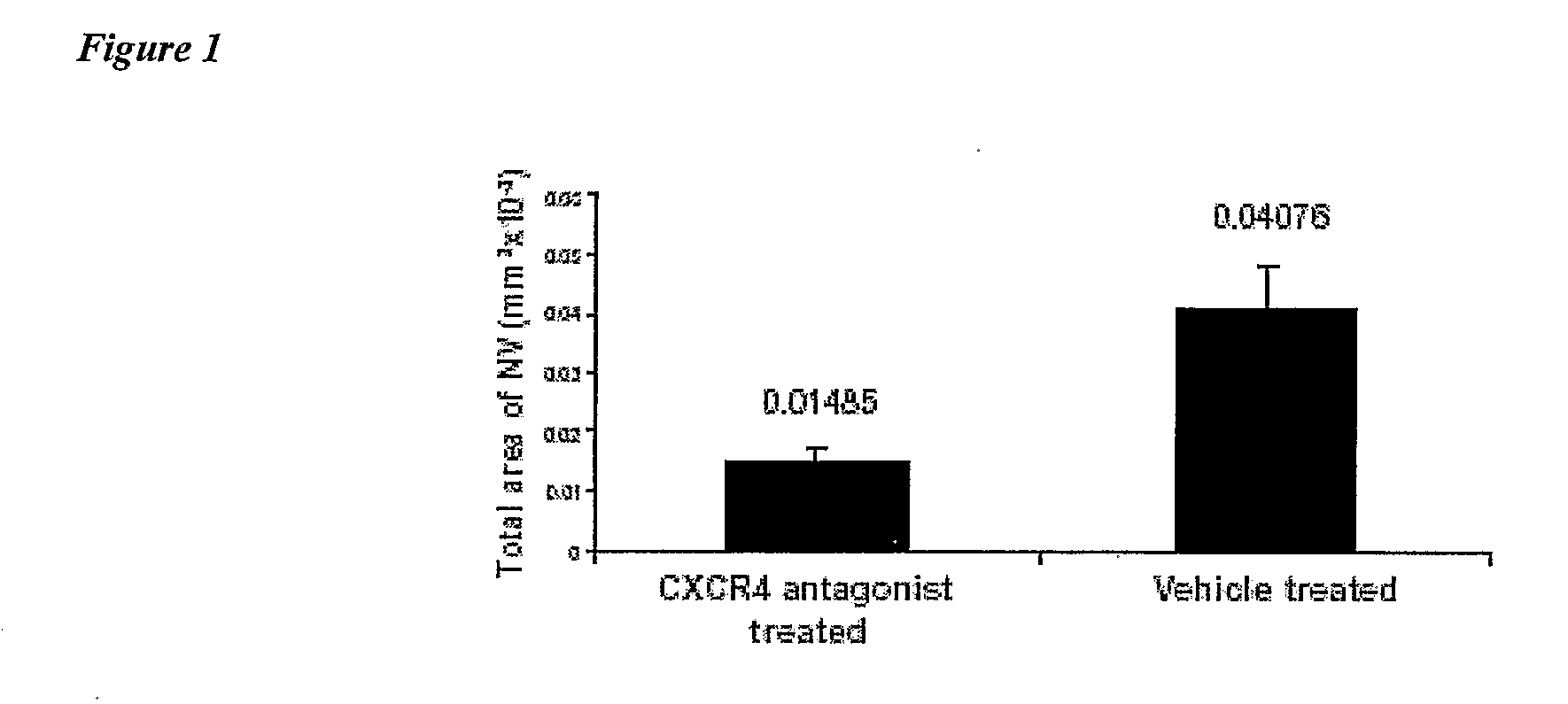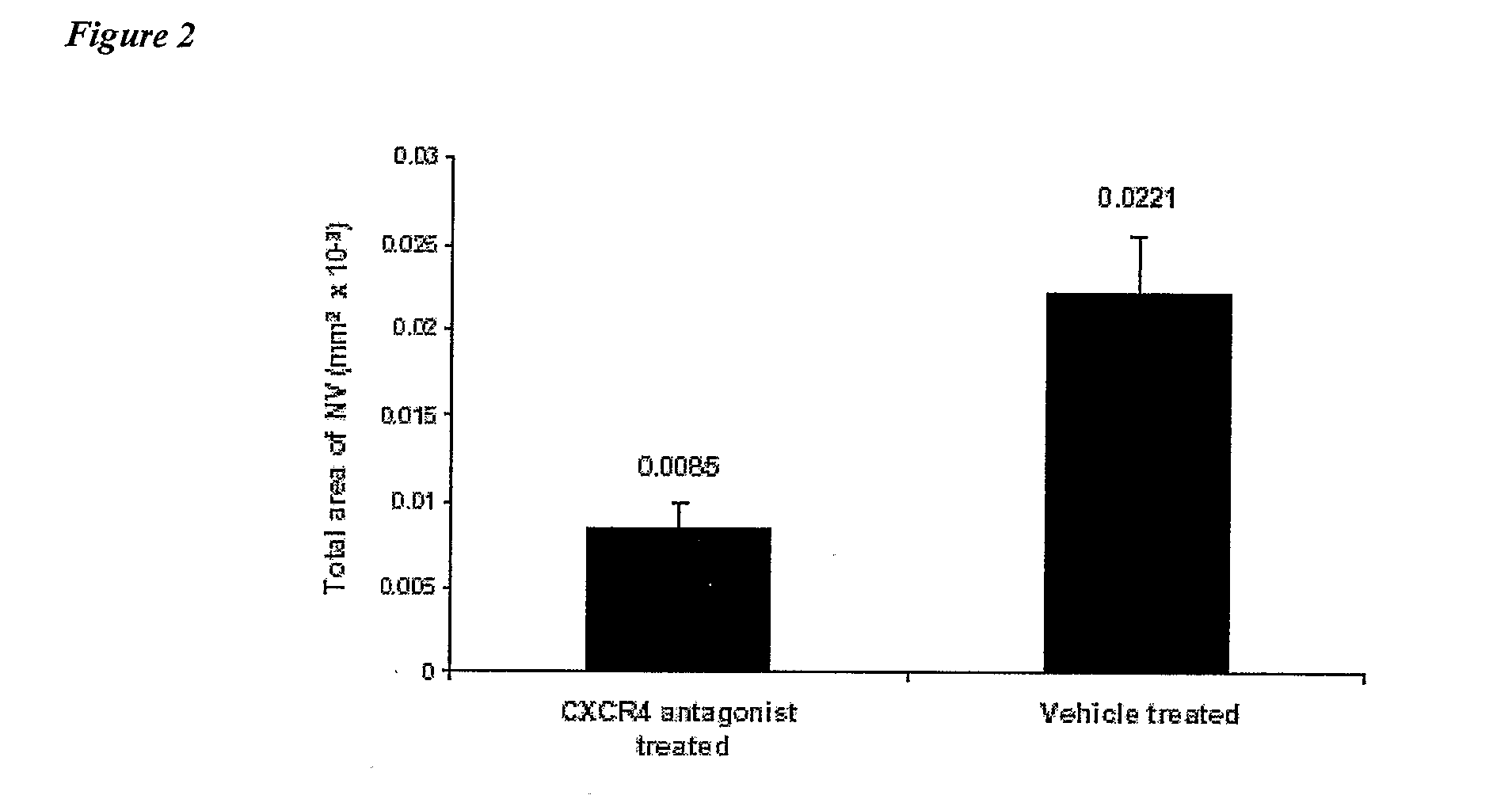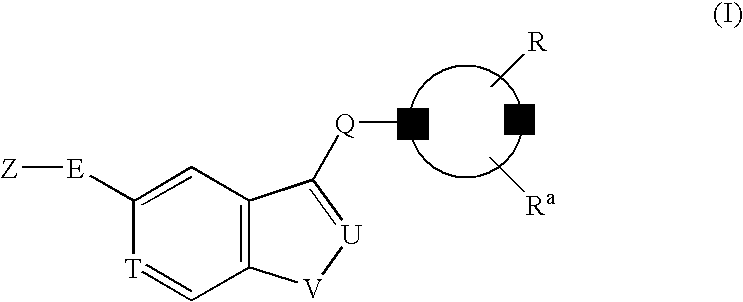Compositions and Methods for Treating Ophthalmic Diseases
a technology for ophthalmic diseases and compositions, applied in drug compositions, biocides, metabolic disorders, etc., can solve the problems of retina damage and visual impairment or blindness, laser surgery is modestly effective and only indicated, and the effect of only indicating the effect of laser surgery is modes
- Summary
- Abstract
- Description
- Claims
- Application Information
AI Technical Summary
Benefits of technology
Problems solved by technology
Method used
Image
Examples
example 1
(3S)-3-[N—(R)-α-(Hydroxymethyl)benzyl]aminomethyl-1-[2-(5-(1,24-triazol-4-yl)-1H-indol-3-yl)ethyl]pyrrolidine
2.4 Hydrogen Oxalate. 0.1 Hydrate.
1. (3S)—N(H)-3-[(R)-α-(Hydroxymethyl)benzyl]aminomethylpyrrolidine
a) (3S)—N-tert-Butyloxycarbonyl-3-(R)-α(hydroxymethyl)benzyl]aminomethylpyrrolidine
[0226] A solution of (R)-(−)-phenylglycinol (2.20 g, 16.1 mmol) and (3R)—N-tert-butyloxycarbonyl-3-methylsulphonyloxymethylpyrrolidine (1.0 g, 3.58 mmol), in toluene (20 ml), was heated at 150° C. for 6 h in sealed pressure tube (Aldrich). The solvent was then removed under vacuum and the residue taken up into ethyl acetate (200 ml) and washed with water (×4). The organic was dried (MgSO4) and evaporated and the crude product chromatographed on silica gel eluting with CH2Cl2 / MeOH (97:3) to give the title-α-(hydroxymethyl)benzylaminomethylpyrrolidine (11.0 g, 87%), δ (360 MHz, CDCl3) 1.45 (9H, s, OC(Me)3), 1.52-2.60 (5H, m, CH2 and CH), 2.90-3.76 (7H, m, 3 of CH2 and CH), 7.25-7.39 (5H, m, Ar—...
example 2
(3S)-3-[N—(S)-α-(Hydroxymethyl)benzyl]aminomethyl-1-[2-(5-(1,2,4-triazol-4-yl)-1H-indol-3-yl)ethyl]pyrrolidine
2.4 Hydrogen Oxalate. 0.1 Hydrate
a) (3S)—N(H)-3-[(S)-α-(Hydroxymethyl)benzyl]aminomethylpyrrolidine
[0229] Prepared from (S)-(+)-phenylglycinol and (3R)—N-tert-butyloxycarbonyl-3-methylsulphonyloxymethylpyrrolidine using the procedures described for Example 45, part 1a.
b) (3S)-3-[N—(S)-α-(Hydroxymethyl)benzyl]aminomethyl-1-[2-(5-(1,2,4-triazol-4-yl)-1H-indol-3-yl)ethyl]pyrrolidine
2.4 Hydrogen Oxalate. 0.1 Hydrate
[0230] Prepared from Intermediate 3 and the preceding pyrrolidine using the procedure described for Example 41, mp 155° C., (Found: C, 55.35; H, 5.71; N, 12.82. C25H30N6O.2.4(C2H2O4).0.1H2O requires C, 55.20; H, 5.44; N, 12.96%), m / e 431 (M+1)+.
example 3
(3S)-3-[N-Benzyl-N-(2-hydroxy)ethyl]aminomethyl-1-[2-(5-(1,2,4-triazol-4-yl)-1H-indol-3-yl)ethyl]pyrrolidine
2.4 Hydrogen Oxalate
a) (3S)—N(H)-3-[N-Benzyl-N-(2-hydroxy)ethyl]aminomethylpyrrolidine
[0231] Prepared from N-benzylethanolamine and (3R)—N-tert-butyloxycarbonyl-3-methylsulphonyloxymethylpyrrolidine using the procedures described for Example 5, parts b and c, δ (250 MHz, CDCl3) 1.24-1.60 (2H, m, CH2), 1.82-1.94 (2H, m, CH2), 2.26-3.06 (9H, m, 4 of CH2 and CH), 3.56-3.60 (2H, m, CH2), 7.20-7.36 (5H, m, Ar—H).
b) (3S)-3-[N-Benzyl-N-(2-hydroxy)ethyl]aminomethyl-1-[2-(5-(1,2,4-triazol-4-yl)-1H-indol-3-yl)ethyl]pyrrolidine
2.4 Hydrogen Oxalate
[0232] Prepared from Intermediate 3 and the preceding pyrrolidine using the procedure described for Example 41, mp 117° C., (Found: C, 55.93; H, 5.39; N, 12.50. C26H32N6O.2.4(C2H2O4) requires C, 55.99; H, 5.61; N, 12.72%), m / e 445 (M+1)+, δ (360 MHz, D6-DMSO) 1.56-1.70 (1H, m, CH of CH2), 2.04-2.16 (1H, m, CH of CH2), 2.52-2.68 (7H, m, 3 o...
PUM
| Property | Measurement | Unit |
|---|---|---|
| freezing point | aaaaa | aaaaa |
| freezing point | aaaaa | aaaaa |
| freezing point | aaaaa | aaaaa |
Abstract
Description
Claims
Application Information
 Login to View More
Login to View More - R&D
- Intellectual Property
- Life Sciences
- Materials
- Tech Scout
- Unparalleled Data Quality
- Higher Quality Content
- 60% Fewer Hallucinations
Browse by: Latest US Patents, China's latest patents, Technical Efficacy Thesaurus, Application Domain, Technology Topic, Popular Technical Reports.
© 2025 PatSnap. All rights reserved.Legal|Privacy policy|Modern Slavery Act Transparency Statement|Sitemap|About US| Contact US: help@patsnap.com



